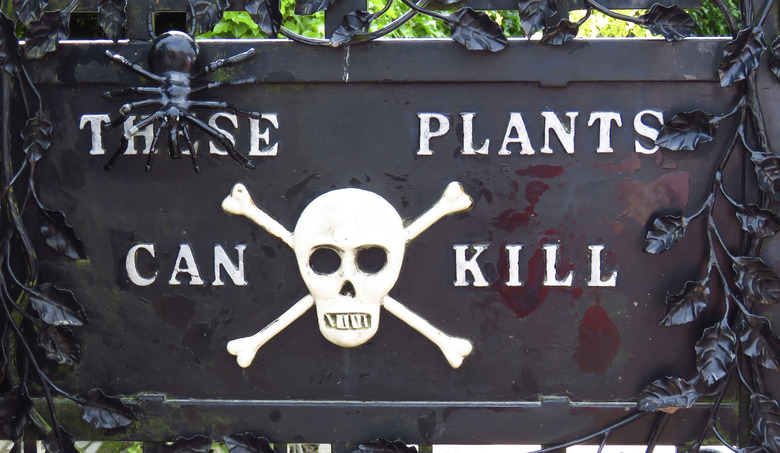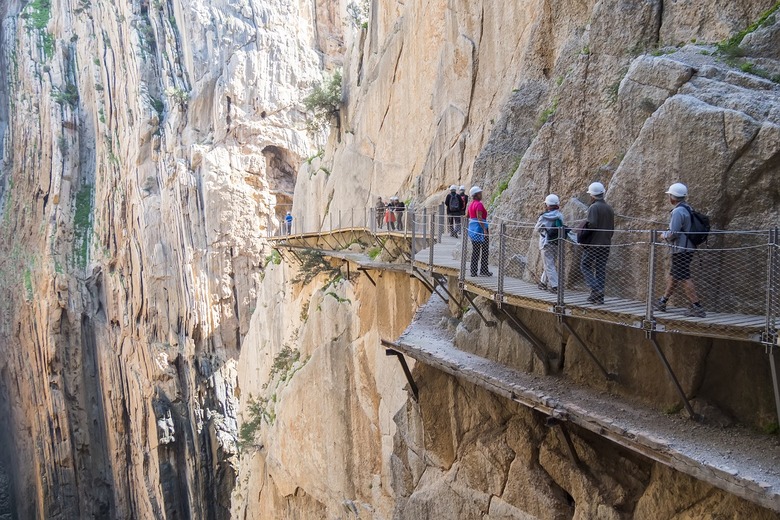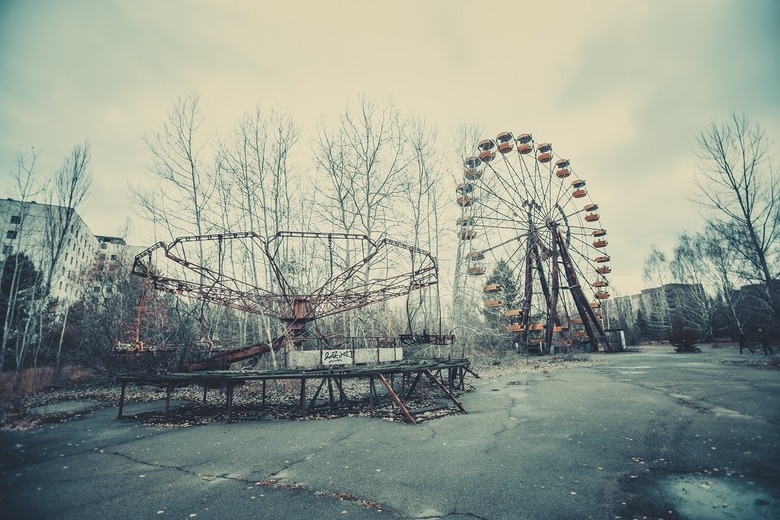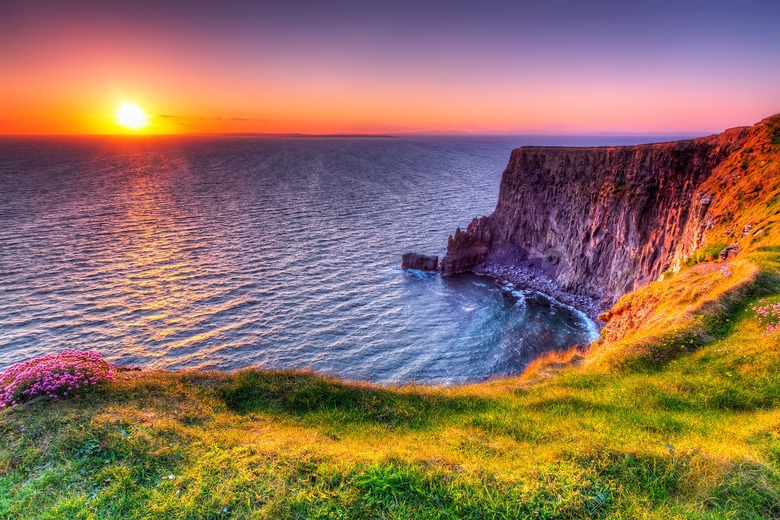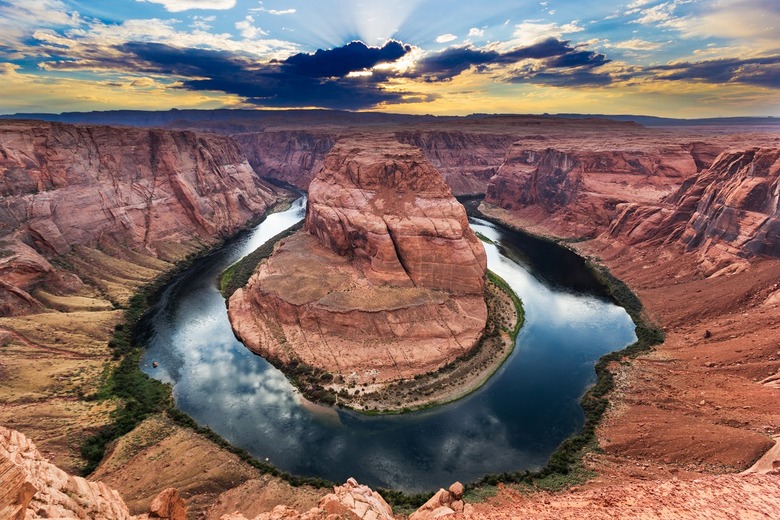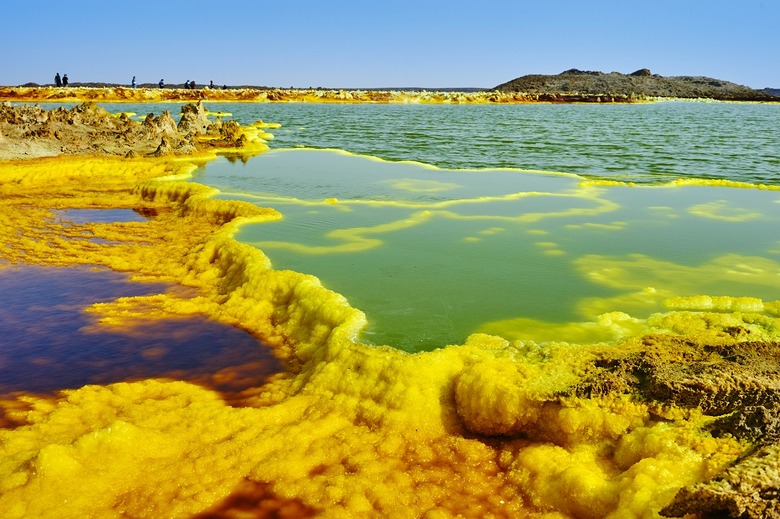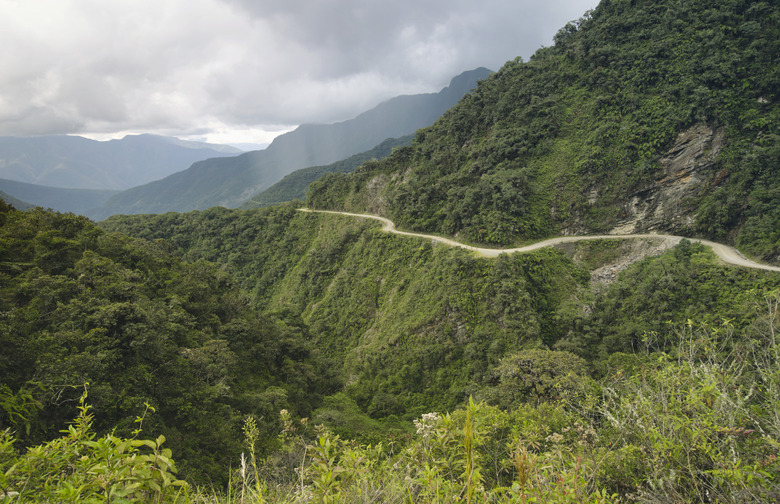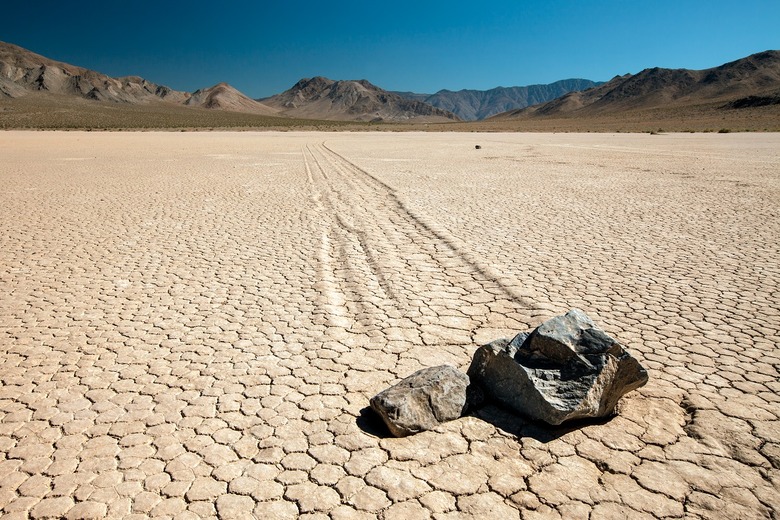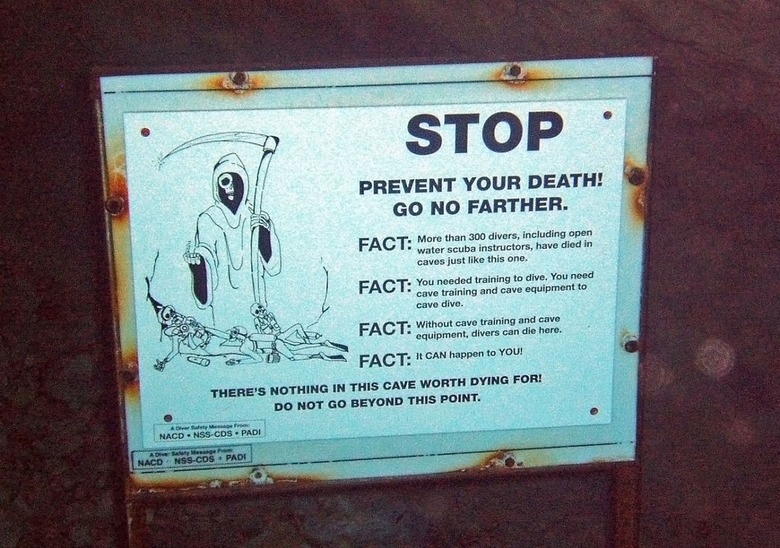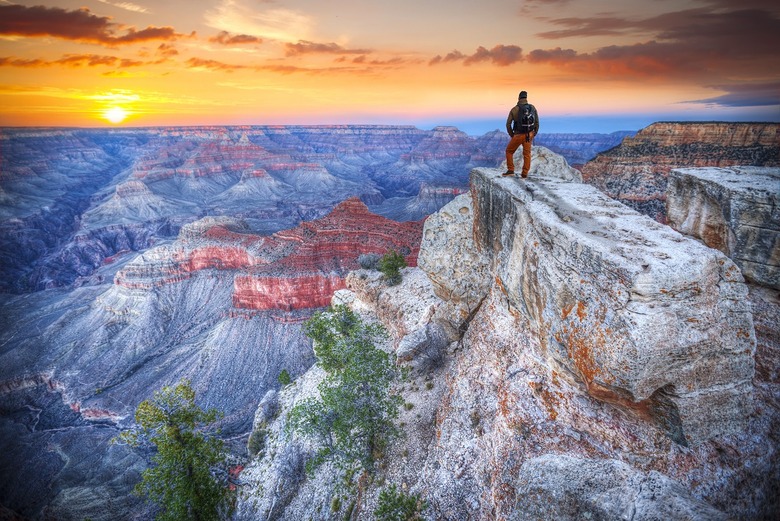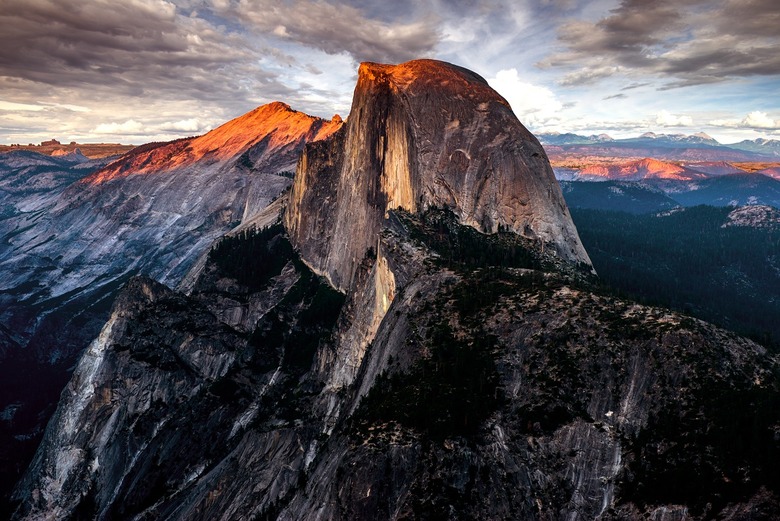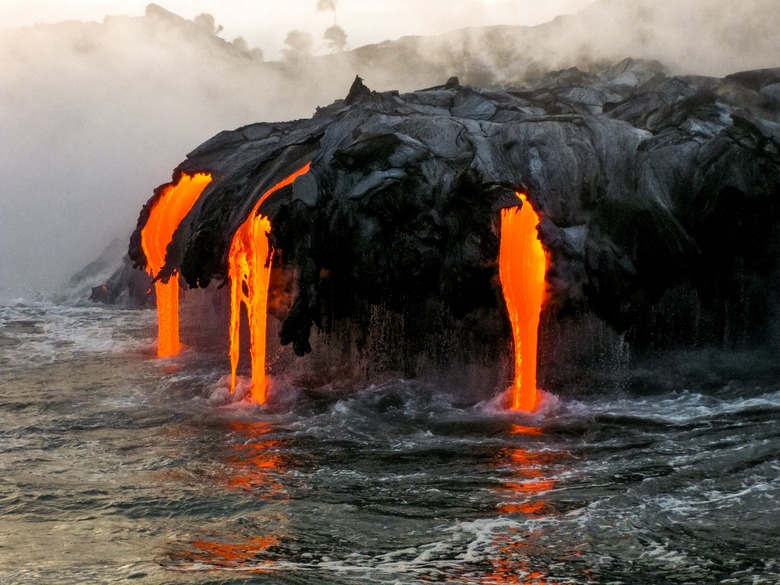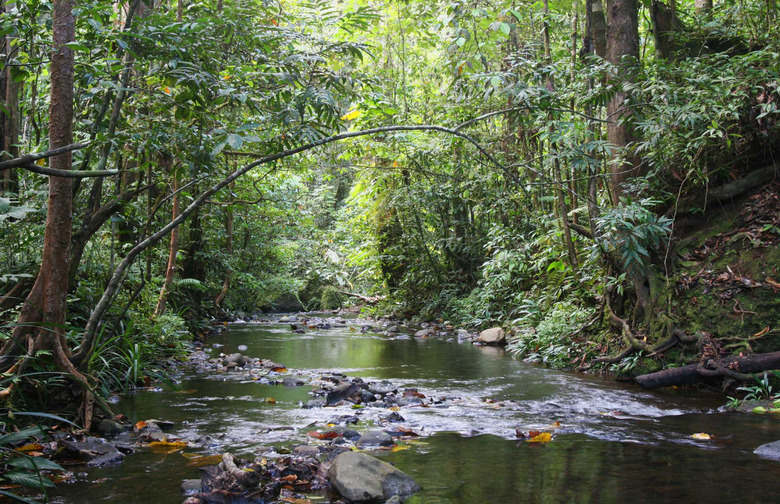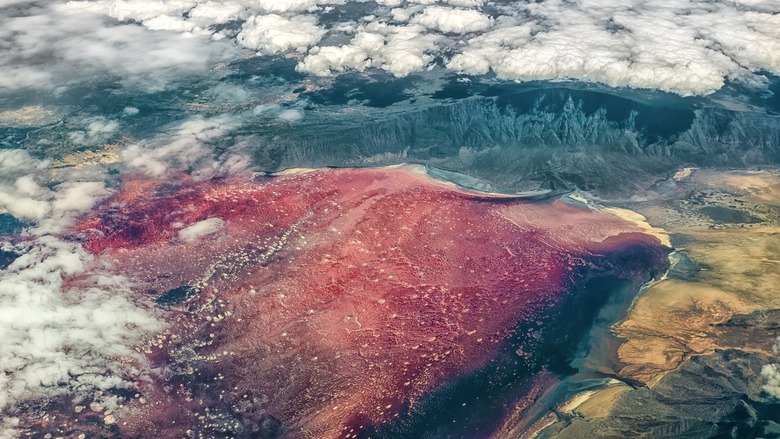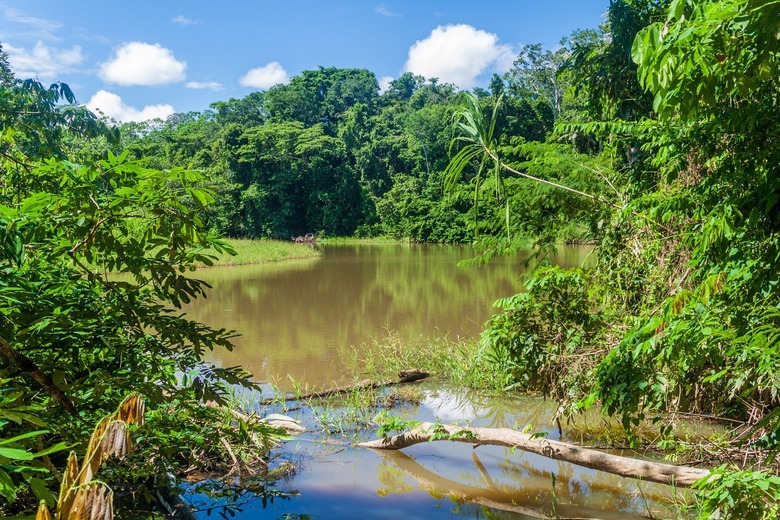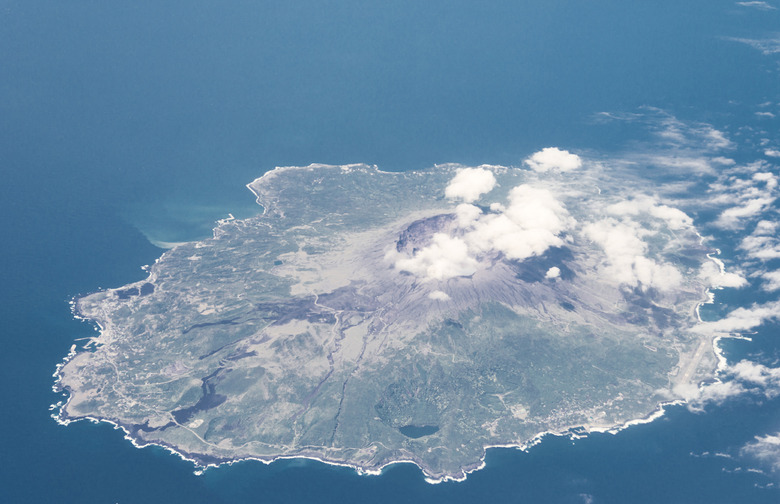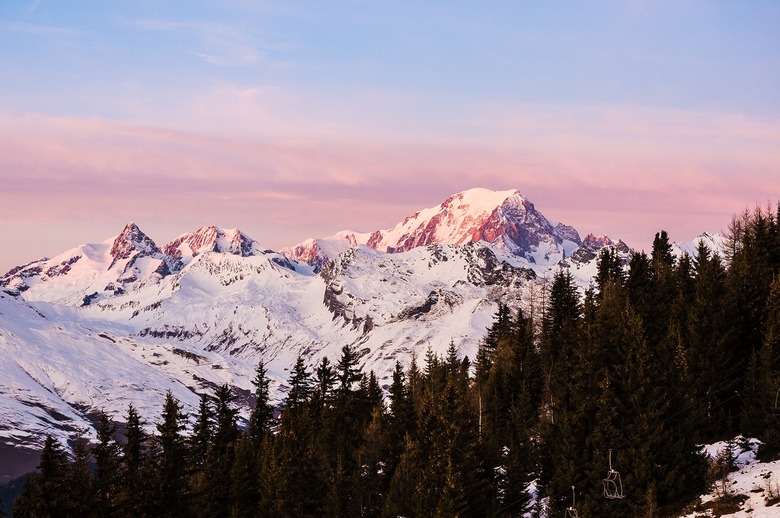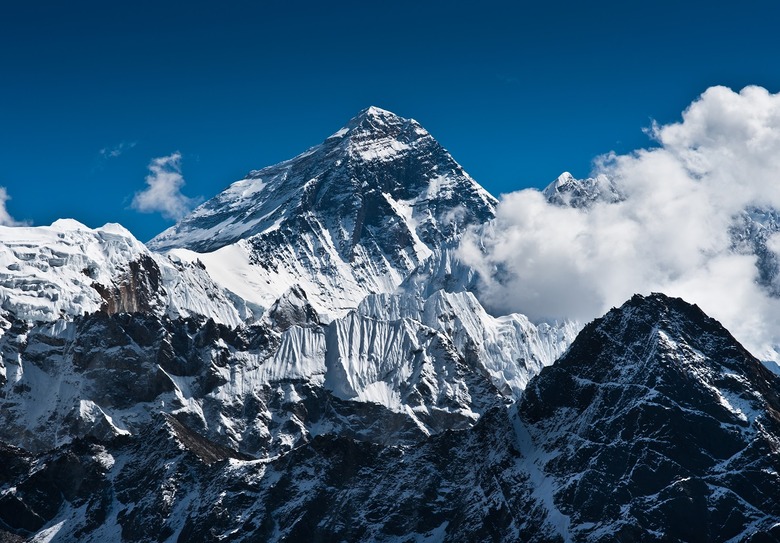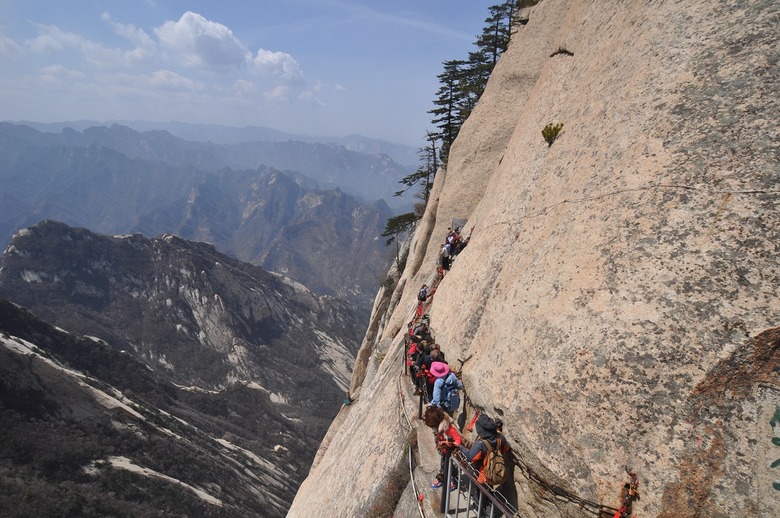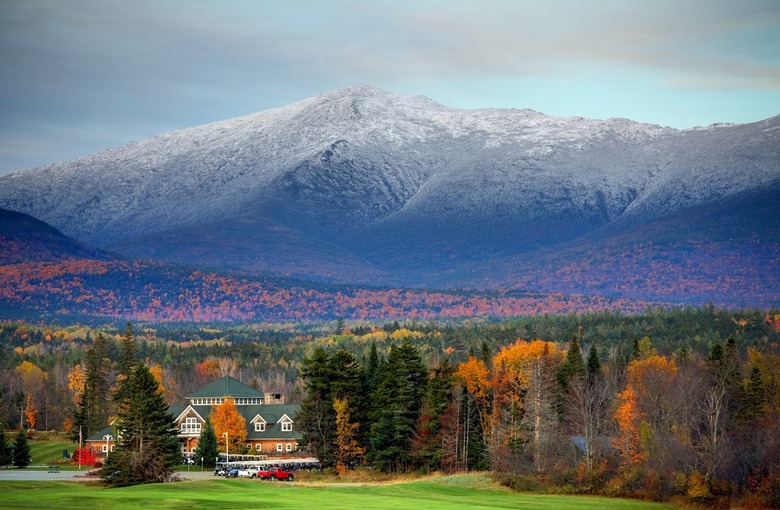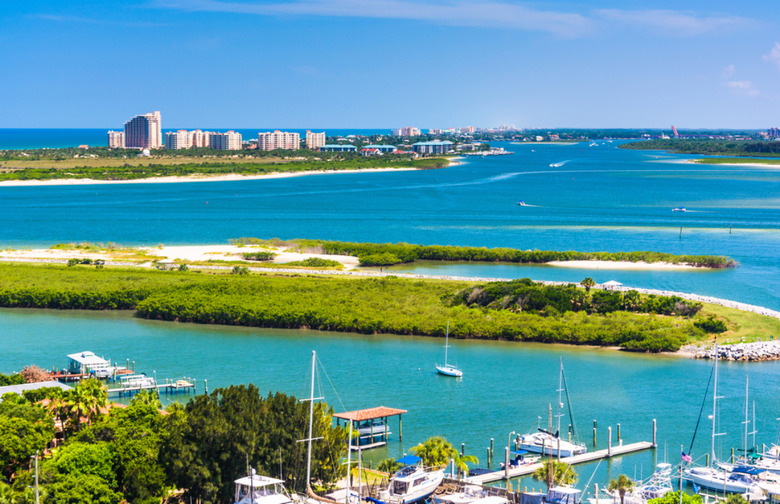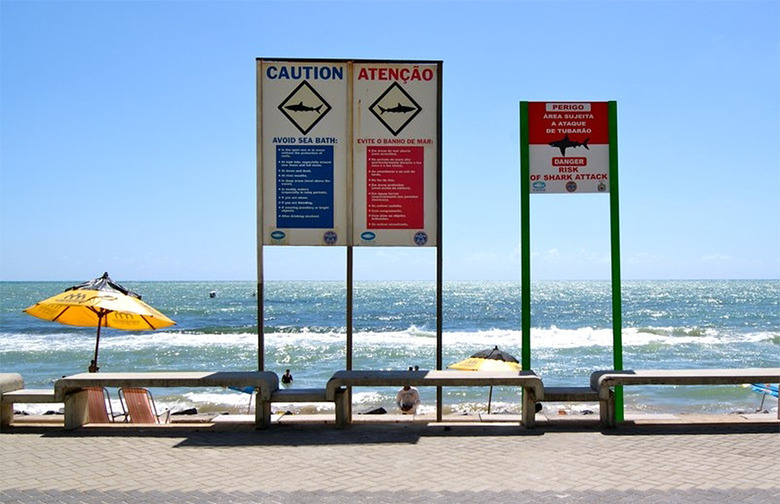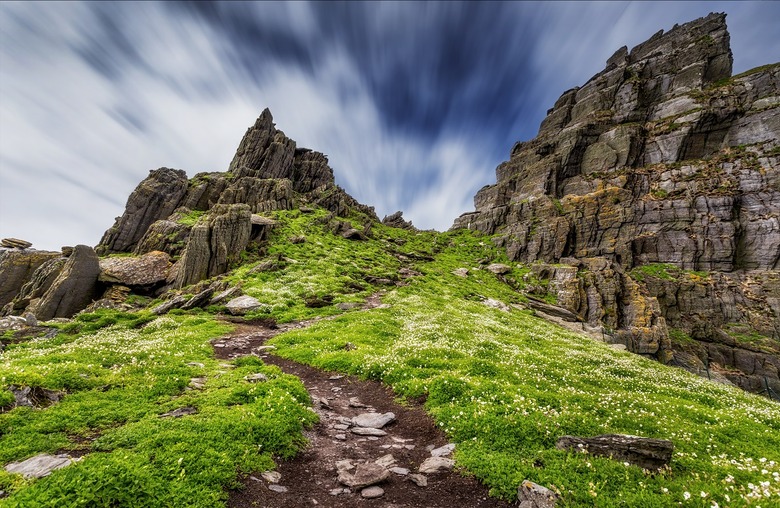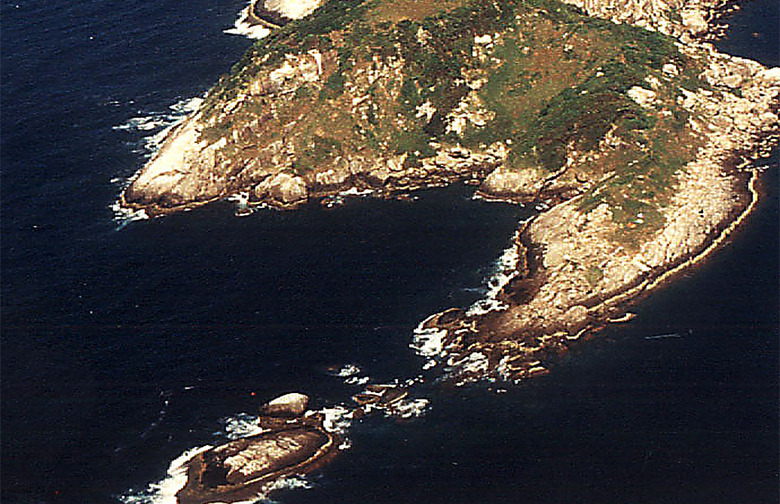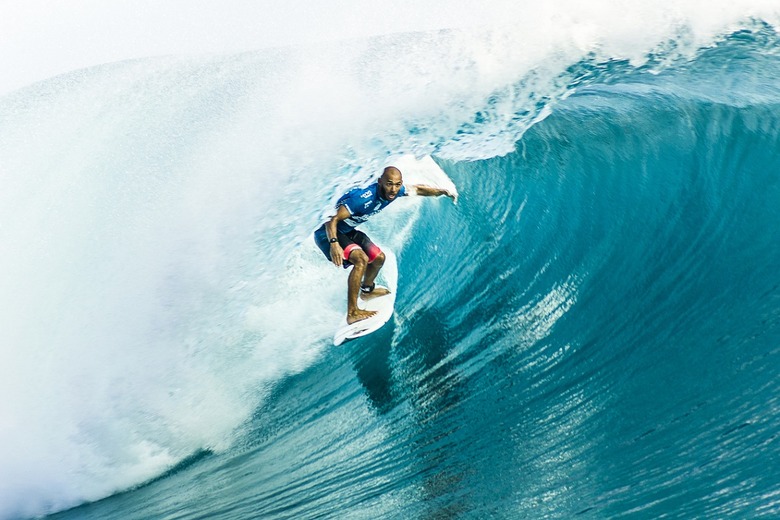These 25 Travel Destinations Might Actually Kill You Slideshow
The gardens of Alnwick Castle in northern England are as tranquil as they are beautiful. The first garden having been planted in 1750, the grounds have grown and developed over the previous centuries, briefly serving as a means of sustenance to aid in the war effort during World War II. Among those gardens, however, lies the infamous Poison Garden, established in 2005. The gate to this portion of the grounds literally warns you that the flora within can kill you, and indeed, it contains hemlock, foxglove, Ricinis communis (which produces ricin), Strychnos nux-vomica (which produces strychnine), and deadly nightshade, among many other poisons. The garden exists primarily to educate the public about drugs — it also contains coca, opium poppies, and cannabis — but it is still a place one might be wise to stay cautious.
Caminito del Rey, Spain
El Caminito del Rey, or "The King's Little Pathway," is a walkway nearly two miles long — and only three feet across, at a height of 330 feet. Located in the small Spanish village of El Chorro, the walkway runs alongside the walls of a gorge and earned the moniker of "world's most dangerous walkway" after five people lost their lives to the hike in 1999 and 2000. It wasn't originally meant for hiking, though. In 1905, it was established for the use of workers at the hydroelectric power plants located at Chorro Falls and Gaitanejo Falls who needed to transport materials, as well as maintain and inspect the channel. It earned the name of Caminito del Rey in 1921 when King Alfonso XIII walked the pathway for the inauguration of the dam on the Guadalhorce River. Even after the walkway was closed in 2000, four more people died between 2008 and 2013. Built out of concrete, the pathway rested on steel bars and stanchions that were themselves built at a 45-degree angle into the rock face. Over the years, it fell into disrepair and multiple parts of the concrete path were partially or completely collapsed, resulting in large gaps with just steel beams connecting the walkway. Handrails were scarce by this time as well, and the only existing safety measure until 2011, when a restoration project commenced, was a wire along the walkway. Three years and $9 million after the project began, many of these issues were finally addressed, and El Caminito del Rey reopened in March of 2015. Even with all the new safety measures in place, however, this is not a destination for a beginning hiker.
Chernobyl, Ukraine
The Chernobyl disaster in April of 1986 saw the explosion of a reactor at the Chernobyl Power Plant near Pripyat in Ukraine, creating high levels of radioactivity in the surrounding area that exist to this day. Despite the present danger, however, Chernobyl is very much a lure for tourists. Thousands visit every year for very strictly regulated and brief visits. Sitting on the ground or walking on the grass is not allowed due to radiation levels, and only food brought from outside the area may be consumed.
Cliffs of Moher, Ireland
With a million visitors a year, the Cliffs of Moher are Ireland's most popular natural tourist attraction. Nearly 400 feet tall — and reaching a maximum height of over 700 feet — the shale and sandstone cliffs have rocks older than 300 million years, as well as approximately 30,000 birds from over 20 species who reside there. What the cliffs don't have, however, are handrails, the lack of which has led to a number of deaths.
Colorado River System, Southwestern U.S./Northern Mexico
The Colorado River runs through seven U.S. and two Mexican states, spanning 1,450 miles, ending in Western Colorado. Its beauty, however, has lured far too many whitewater rafters to their deaths. Some 15 people died in the first seven months of 2015, likely due to high water and rapid currents. Water levels due to melting snow also resulted in 12 deaths, 176 injuries, and 275 accidents in 2007. In addition to the water levels, inexperience and alcohol have also been attributed as contributing factors to many of these deaths.
Danakil Desert, Eritrea
In case the weather isn't enough to get you (temperatures regularly reach 120 degrees F), toxic geysers compliment the active volcanoes of the Danakil Desert to make up a landscape that's utterly deadly. An experienced guide is required in order to visit this Eritrean desert that lies 100 meters below sea level.
Death Road, Bolivia
The North Yungas Road, running 43 miles from La Paz to Coroico in Bolivia, is better known as "Death Road" due to the fact that it is considered to be the most dangerous road in the world, taking the lives of hundreds per year. Despite the fact that it runs along cliffs up to 2,000 feet high, the road has no guard rails to protect cyclists and motorcyclists. Not that it's deterred many; over 25,000 mountain bikers take on the pass annually. Up to 300 people die per year, their deaths often ominously marked with little wooden crosses on the road.
Death Valley, California
The hottest place in the world is actually in California: Death Valley is the current record-holder for highest temperature ever recorded on earth, 134 degrees F. A person cannot survive more than 14 hours without water in this desert valley.
Eagle’s Nest Cave, Florida
The main hall of Eagle's Nest Cave is about the size of a football field and it runs to a depth of 300 feet, earning itself the moniker of the "Mount Everest of cave diving." Despite the fact that it has a warning sign with the Grim Reaper on it, people have insisted on taking on the plunge at this underwater cave in Florida. At least 10 divers have lost their lives since 1981.
Grand Canyon, Arizona
Around 600 people have died at the Grand Canyon, an average of 12 people out of the 4.5 million who go every year. The site is full of dangers; people have died of dehydration, exhaustion, heat stroke, exacerbated medical conditions, slips and falls, and even suicide.
Half Dome, Yosemite National Park, California
The Half Dome at Yosemite National Park is almost completely vertical, and climbers have to use metal cables to make the nearly 400-foot ascent. Despite this, there have been many deaths, with approximately 60 lives lost. Some have lost their footing on the slippery surface of the rock and fallen to the "Death Slabs," as the area at the bottom of the cliff is called, whereas others have been taken by the rapids below it. Lightning has also been known to hit unfortunate hikers.
Kilauea and Other Active Volcanoes, Hawai’i
Hawai'i volcano tours take tourists by helicopter to see the state's three active volcanoes: Loihi, Maunaloa, and Kilauea, the most active volcano on the planet. While volcano tourism is not uncommon and may be done perfectly safely, these volcanoes are dangerous even when not erupting. Lava has flown out of these volcanoes so violently that it has struck tourists flying overhead. In 1996, thirty people were killed, and 45 had serious injuries between 1992 and 2002. The Hawaii Volcano National Parks System has reported about 40-volcano related deaths per decade. A bicycle tour on Kilauea was shut down when three people died in 2007. Bike tours have since resumed, however; cyclists are driven to the top of the volcano before getting a bike to ride down on. Still, loss of control on the bikes has also proved deadly on occasion. Volcanic gases have also killed tourists as well as park staff — the "lava haze," despite looking like simple vapor, is made up of carbon dioxide, hydrochloric acid, and hydrogen sulfide.
Kokoda Trail, Papua New Guinea
After Australian soldiers fought here in World War II, the 60-mile Kokoda Trail in Papua New Guinea has become popular among Australian tourists seeking to pay their respects. Crossing rivers, mountains, and jungle terrain, the trek is a tough one, as well as dangerous. Six people have died on the trail, and up to 50 others have had to be airlifted out.
Lake Natron, Tanzania
Due to the fact that Lake Natron is covered in an alkali salt crust, it is utterly beautiful. It is also utterly deadly, as it kills any living thing that comes into contact with it. Swimming is strictly forbidden, so take your bathing suit elsewhere when vacationing in Tanzania.
Madidi National Park, Bolivia
The plants are what you have to watch out for at this beautiful Bolivian national park. Certain species can cause dizziness and severe rashes and itches upon contact, so you'll want to check with park authorities or local guides as to which ones to watch out for. Bonus danger: If you get even the smallest cut or wound, it might get infected with tropical parasites.
Miyakejima Island, Japan
Beneath the island of Miyakejima off the coast of Japan lies a chain of volcanoes which have erupted six times in the past century. The resulting sulphur dioxide and giant ash clouds have left a significant chunk of the island unsuitable for habitation, and indeed, evacuation left the island empty for an entire five-year period. People began to trickle back in in 2005, but nearly a third of the land remains off limits. Residents and visitors on Miyakejima must often wear gas masks as a protective measure against the very air of this island.
Mont Blanc, France/Italy
This gorgeous peak is the highest mountain in the Alps and one of the most dangerous hiking spots in the world. At 15,774 feet tall, Mont Blanc's top wind speeds can reach a frightening 60 miles per hour. This doesn't stop more than 20,000 people from attempting to conquer the peak every year, however, and unfortunately 30 to 70 people lose their lives to the endeavor annually. Due to guide tour companies misadvertising the Mont Blanc hike as simply a "long walk" and gondolas which offer to take people up the first 9,000 feet, far too many inexperienced hikers take on the task, and some are even so misinformed as to try it in shorts and a t-shirt. You're probably better off enjoying the mountain from a distance while dining at a nice restaurant in nearby Megève.
Mount Everest, Nepal/Tibet
The tallest and most famous peak in the world is also one of the most dangerous to attempt. Mount Everest is located in the Himalayas, right on the border of Tibet and Nepal. Just getting to Base Camp is a dangerous ordeal, with some mountain climbers dying from altitude sickness or finding themselves in need of evacuation. And if you do get to the top at over 29,000 feet, there's a chilling one-in-10 chance you won't come all the way back down.
Mount Hua Plank Walk, China
The 2,154-meter hike on Mount Hua's plank path is one of the most dangerous in the world, believed to be responsible for the death of a hundred people every year. The path runs alongside a mountain that is sacred in Taoist tradition. With only a small chain to hold onto, hikers have to take on narrow pathways, steep stairs, and extremely vertical ascents. Many Chinese hikers even embark on the walk at night so that they get to the East Peak of Mount Hua by dawn, a practice left over from the days when people thought not being able to see the danger was safer.
Mount Washington, New Hampshire
As far as famous mountains go, Mount Washington is relatively short at 6,000 feet. That's still high, however, and the peak is also still devastatingly dangerous. Over 100 people have died since 1849, despite the mountain's many signs on the ascent warning hikers to turn back from the dangers that lie ahead. It's the weather, however, rather than the mountain's height that's responsible for taking these lives. Mount Washington lies in the path of multiple storm tracks, so nearly every storm that ravages the country seems to fly over here. The land also seems to create a natural funnel that results in all wind getting channeled directly toward the mountain. This results in wind speeds up to 231 miles per hour! Windchills also get devastatingly low; the search party for a climber who succumbed to exposure in 2015 reported a wind chill of -100 degrees F. Perhaps a road trip through New Hampshire would be a better idea.
New Smyrna Beach, Florida
Dubbed "one of the world's top 20 surf towns" by National Geographic, New Smyrna Beach is also one of the most dangerous. Volusia County, the county the city lies within, is known as the "shark bite capital of the world" — and not in the fun sense. With 15 incidents just last year, shark attacks here made up nearly half of the 32 reported within Florida, which itself made up the majority of the 53 shark attacks reported in the U.S. New Smyrna Beach, with more shark attacks per square kilometer than any place worldwide, is itself one of the most dangerous beaches for becoming shark food, although most attacks are not fatal. In 2014, two separate incidents occurred within the same day — a 15-year-old boy and a 29-year-old man were both bitten, the latter needing 30 stitches. On September 18 of last year, three different individuals attempting to enjoy a surf on the same beach were bitten by sharks in the span of a just few hours.
Praia de Boa Viagem, Brazil
Praia de Boa Viagem may have fewer total shark attacks than New Smyrna Beach — 56 between 1992 and 2012 — but its fatality rate is much higher. One-third of those attacked by sharks at this Brazilian beach end up dead. The nearby Porto Suape was built on a bull shark breeding ground, cutting female sharks off from several estuaries where they once came to bear offspring. Less commonly, tiger sharks have also been known to attack beachgoers after following ships in search of garbage thrown overboard to eat. Somehow, Praia de Boa Viagem still manages to be one of Brazil's most popular attractions, although we'd recommend you go for a different kind of shark attack.
Skellig Michael, Ireland
Having already made an appearance in Star Wars: The Force Awakens and due to make another in Star Wars: The Last Jedi, Skellig Michael has recently achieved a degree of celebrity it already should have had worldwide. A UNESCO World Heritage Site since 1996, the top of the island hosts an ancient Christian monastery which has been there since sometime between the sixth and eighth centuries. Six hundred stairs over 1,000 years old lead to the top of the island in a steep and very slippery climb without hand or side rails of any kind, and a few lives have been claimed already.
Snake Island, Brazil
Despite the fact that it's literally illegal to go there, thrill seekers have been known to bribe local fishermen into giving them a ride to Ilha da Queimada Grande, otherwise known as Snake Island. Known as "the most dangerous place on the planet," the island, which lies a little over 20 miles off the coast of Brazil, hosts five snakes for each of its 430,000 square meters, according to some estimates. They're not just any snakes, either. Snake Island is the only home of Bothrops insularis, or the golden lancehead pit viper — the most venomous snake in the world. Many people have died after snake attacks here, and the island's lighthouse has even been automated ever since a lighthouse keeper succumbed to a snake bite. We're not sure you'd find much else to eat there either.
Teahupoo, Tahiti
The waves of Teahupoo are as deadly as they are beautiful. The 10- to 25-foot waves take on an unusual shape as a result of the shallow coral reef, just 20 inches below the water's surface. Unfortunately, many novice surfers underestimate the shallowness precisely because of the waves' height, and at least five people have died since 2000. Most fittingly, and most ominously, "Teahupoo" means "to sever the head" or "place of skulls."
If this list has you freaked out, not to worry. There are plenty of places where you can go for a fun vacation where you don't have to fear for your life.
